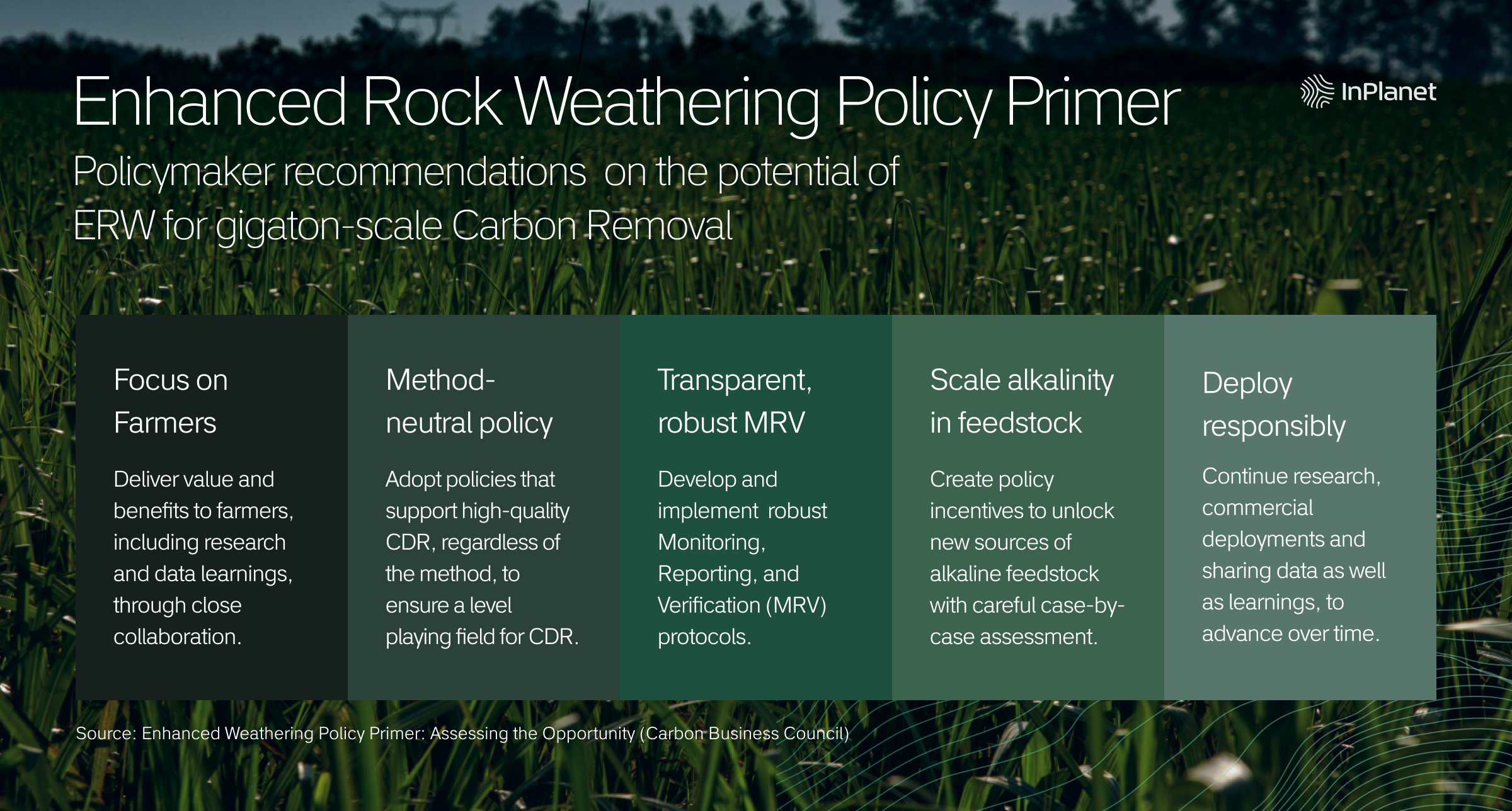The potential of ERW for gigaton-Scale Carbon Removal
The Carbon Business Council has highlighted the immense potential of enhanced rock weathering (ERW) as a scalable and cost-effective carbon dioxide removal (CDR) strategy in launching a report on ERW policy. The report, titled “Enhanced Weathering Policy Primer: Assessing the Opportunity,” explores the benefits, challenges, and policy recommendations needed to responsibly advance this promising CDR technology. Although initially published some time ago, the core recommendations for policymakers stand true to current conditions.
Why ERW is a compelling climate solution
There has been clear scientific consensus that CDR is required at the gigaton level in order to meet the goals of the Paris Agreement. Within this context, and the urgent need to remove gigatons of CO₂ annually to meet climate goals, ERW offers a compelling and viable solution. The primer emphasizes that ERW is not just about carbon removal; it also provides significant “agronomic and economic co-benefits to farmers” and to farming communities. These benefits include improved soil health, increased crop productivity, and potential cost savings through optimized fertilizer use.

Policymaker recommendations that matter
The policy primer outlines several key recommendations for policymakers to support the responsible advancement of ERW, looking closely at potential social, economic and environmental positive impacts. These include:
- Keeping a focus on farmers: Recognizing the importance of delivering value and benefits to farmers, the report suggests prioritizing funding for research and conservation programs that build awareness and offer on-farm demonstrations of ERW. InPlanet emphasizes close collaboration with our farming partners, in working toward shared data and learnings as well as strengthening the capacity for CDR.
- Implementing method-neutral policy: Governments should adopt policies that support high-quality CDR, regardless of the specific method used. This ensures a level playing field for ERW and other CDR technologies. It is widely accepted that organisations should take the approach of building CDR portfolios with a balanced mix of CDR technologies, inclusive of ERW.
- Supporting robust MRV for transparency: Developing and implementing scientifically robust Monitoring, Reporting, and Verification (MRV) protocols is crucial for building market trust and ensuring the efficacy of ERW projects. Several ERW companies are now contributing to technology platforms that allow shared access to data, such as Cascade Climate’s ERW Data Quarry.
- Investing in scaling alkalinity feedstock: Acknowledging that scaling EW will require a substantial increase in the supply of sustainably sourced alkalinity, the primer urges governments to create policy incentives to unlock new sources of alkaline feedstock. The report in fact emphasizes that not all mining residues represent appropriate feedstock for ERW, requiring careful, case-by-case assessment. Consequently, the National Academy of Sciences, Engineering, and Medicine estimates an up to 10Gt standing stock of alkaline mine waste potentially suitable for ERW, so that new mining will not necessarily be required for scaling of ERW.
- Maintaining commitment to responsible deployment: Stakeholders must prioritize the safe, equitable, and environmentally responsible deployment of ERW. Continuing scientific research, commercial deployments and sharing data as well as learnings, are all crucial to the advancement of ERW over time.
The role of InPlanet
At InPlanet, we believe in the immense potential of ERW, and are dedicated to making it a safe, scalable and effective CDR method. As noted in the primer, mining companies and the agricultural sector can play an important role in climate solutions, and we work closely with these stakeholders as well as political and corporate sectors. We collaborate with the Carbon Business Council and other industry leaders to drive innovation and best practices in the field. Our Head of Carbon, Dr. Matthew Clarkson, was part of the working group that developed the primer.
By continuing to implement the policy recommendations outlined in this primer, we can unlock the full potential of ERW to address climate change while benefiting farmers and communities worldwide.